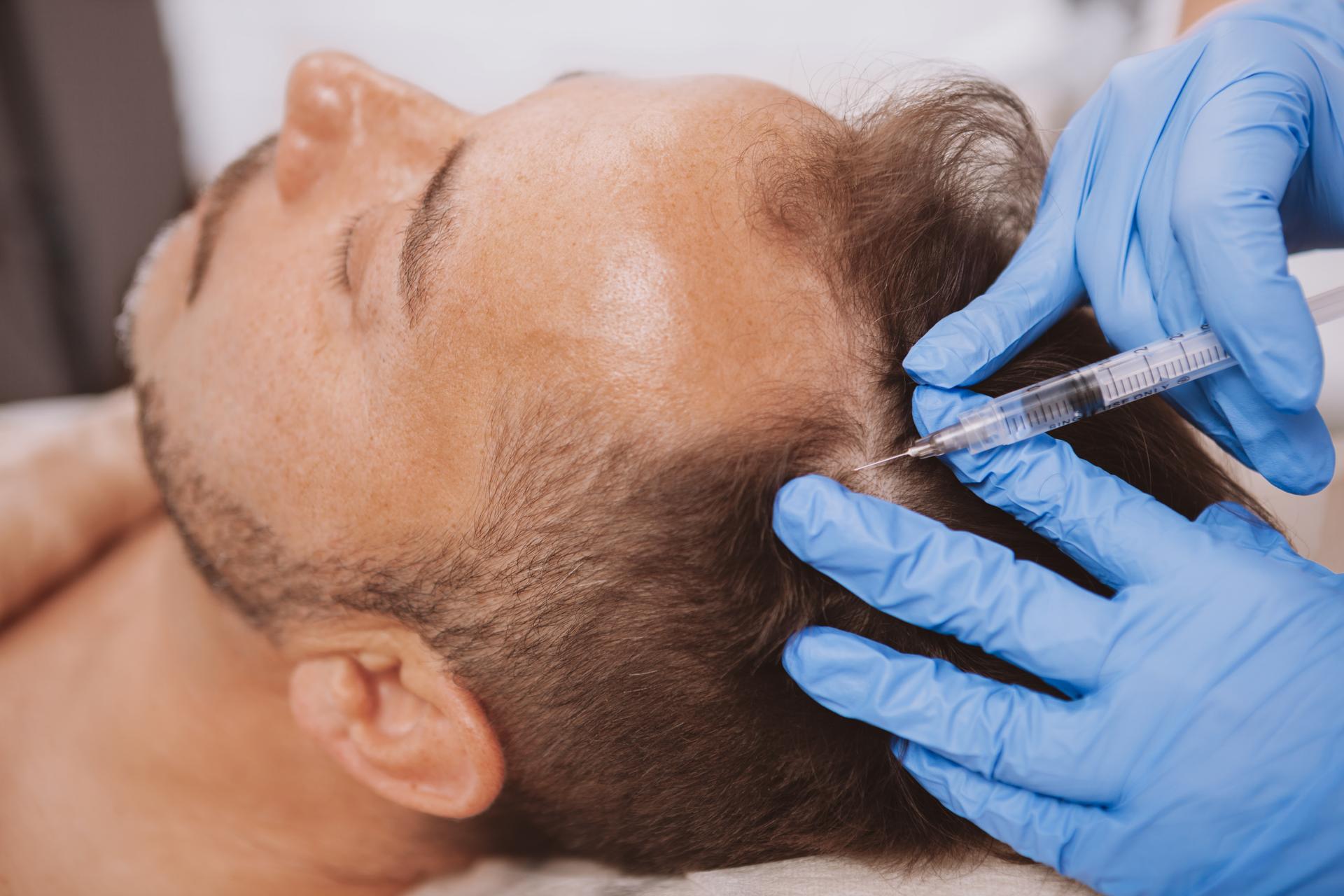Hair loss is extremely common. Nearly 60% of men and 50% of women experience hair loss. According to the American Academy of Dermatologists, if you are losing more than 50 to 100 hair strands in a day, there may be an underlying issue causing your hair loss. Several factors can be responsible for hair loss, including aging, hormones, genes, medical conditions, medications, stress, lifestyle habits, and so on. While over-the-counter drugs are available to address your hair loss problems, many opt for hair transplants, owing to the permanent nature of the results.
If you are suffering from hair loss and have been considering a hair transplant procedure, it is natural to have various concerns or questions in mind. Many people tend to have one common question: whether they can go bald after a hair transplant surgery. To address this concern better, first, let’s go through some basics of how a hair transplant is conducted and why you should opt for one.
A hair transplant is a surgical procedure wherein the surgeon extracts hair follicles from the donor area on the scalp (usually the back of the head) and implants them on the balding area on the scalp, known as the recipient area. There are two types of hair transplant surgeries, i.e., FUE hair transplant and FUT hair transplant,
Why opt for a hair transplant?
There are many reasons why hair transplants can effectively address hair loss or hair thinning. Some of these are:
1. Natural-looking results
One of the key benefits of a hair transplant is the natural-looking result it yields. Since the individual’s own hair follicles are used during the transplant, the restored hair looks completely natural. The newly implanted follicles have a texture and look that matches the donor’s existing hair. The follicles are then strategically grafted over the head, making the hairline look natural.
2. Painless and minimally invasive procedure
Patients are administered local anesthesia during a hair transplant surgery, making the entire procedure completely painless and safe. Moreover, if you get the treatment done from a reputed clinic like New Jersey Hair Restoration Center, our skilled surgeons will ensure the scarring is minimal.
3. Minimal recovery time
The recovery time after a hair transplant surgery is minimal. You may need bed rest for a couple of days, but after that, you will be able to resume your daily activities. However, make sure you follow all the aftercare rules and guidelines given to you by your surgeon and avoid any vigorous physical exercise for some days, as per your surgeon’s advice.
4. It is a lifetime investment
While investing in a hair transplant surgeon may seem like a huge amount, you will realize that it is actually a smart and affordable long-term option. Other non-surgical alternatives may seem more affordable, but they need extensive maintenance, and the costs keep adding up with time. Hair transplants are a one-time investment and can yield long-lasting results.
5. Enhances self-esteem
Hair loss, especially in younger patients, can take a toll on the individual’s confidence and have a devastating impact on their social and personal lives. Hair transplants can restore their self-esteem and add a positive outlook to their lives.
Can you go bald after a hair transplant surgery?
It Is absolutely normal to lose transplanted hair within 2-3 weeks post-surgery. This is a natural process wherein the transplanted grafts fall off, making way for new hair growth. It can take up to 8-12 months before patients can witness significant results.
If you are concerned about overall hair loss after a hair transplant, let’s go through some essentials to take note of.
Hair transplants do not cure baldness per se. They only add hair in balding areas. In male and female pattern hair loss, the hair loss is triggered by a hormone called DHT (dihydrotestosterone). The hormone attacks the hair follicles in this condition, damaging them and preventing new hair from growing.
Even if you have a hair transplant, you need to make sure you address the root cause of the hair loss and seek treatment for the same. Otherwise, you may continue losing hair even after a hair transplant. This might result in an odd balding pattern. That’s because while your transplanted hair remains unaffected by the pattern baldness, the DHT will affect the other hair strands, causing them to fall out. This, in turn, will result in an unnatural hair loss pattern in the transplanted sections of the scalp.
If you are looking for an effective way to address the root cause of pattern baldness, DHT blocker treatment is what you need. Get in touch with our experienced hair transplant doctors at the New Jersey Hair Restoration Center for the best possible guidance, advice, and treatment concerning hair loss.


